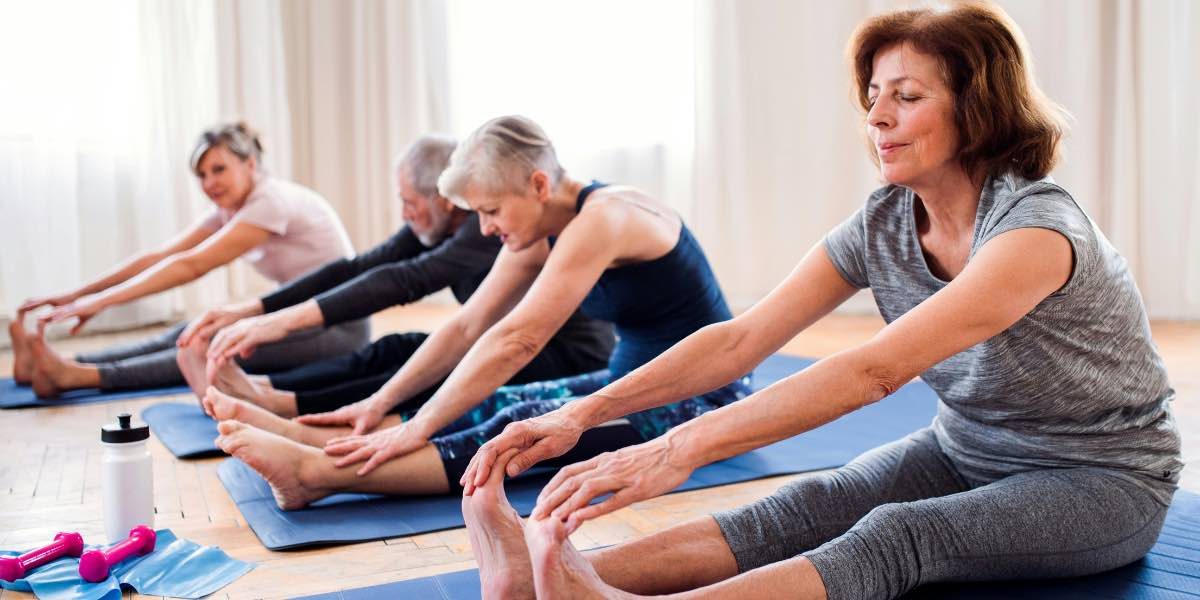Aging is a natural process that everyone experiences, and how individuals age may be influenced by various lifestyle choices. Engaging in regular physical activity may support overall well-being as people grow older. Staying active has the potential to contribute to physical and mental health. Below is an overview of how exercise may play a role in the aging process and ways to incorporate it into daily life.
Read also: Work-Life Balance for Parents: Managing Relationships and Family Commitments
Why Exercise May Be Beneficial with Aging
As individuals age, the body undergoes various changes. Muscle mass may decrease, bones can become less dense, and metabolism may slow down. These changes are associated with an increased likelihood of experiencing certain health conditions, including cardiovascular concerns, changes in blood sugar regulation, and bone density loss. Some studies suggest that engaging in regular physical activity may help manage or mitigate some of these changes.
Exercise has been linked to cardiovascular health, which plays a role in maintaining heart and blood vessel function. It may also contribute to muscle and bone strength, which could be beneficial in reducing the likelihood of falls and fractures. Additionally, physical activity is associated with potential mental health benefits, including the release of endorphins, which are sometimes referred to as “feel-good” chemicals. Engaging in regular exercise may also support cognitive function and contribute to overall mental well-being.
Types of Exercise That May Support Healthy Aging
Different types of physical activity may provide varying benefits. A well-rounded approach often includes a combination of cardiovascular activities, strength training, and flexibility exercises.
Cardiovascular exercise, such as walking, swimming, or cycling, involves activities that increase heart rate and may contribute to endurance. This type of activity is often associated with supporting heart and lung function. Additionally, engaging in cardiovascular exercise may be helpful for maintaining a stable weight, which can become more challenging as metabolism changes with age.
Strength training, which includes activities such as lifting weights or using resistance bands, may help maintain muscle mass. Since muscle mass naturally tends to decline over time, engaging in resistance-based activities may provide support for joints, balance, and ease of movement. Strength training may also influence metabolism by affecting muscle composition.
Flexibility exercises, including stretching and yoga, are often included in exercise routines to help maintain a full range of motion. Over time, joints and muscles may become less flexible, potentially leading to changes in mobility. Incorporating stretching or flexibility exercises may help support comfort and movement in daily activities.
Developing an Exercise Routine
Starting or maintaining an exercise routine may seem challenging, especially for those who have not engaged in regular physical activity for some time. Gradually incorporating movement and finding enjoyable activities may make the process more sustainable.
A gradual approach may include beginning with low-impact activities such as walking, light stretching, or gentle yoga. Setting small, achievable goals—such as walking for 20 minutes a few times per week—may help in building consistency. Over time, individuals may choose to increase the duration or intensity of their activities based on their comfort level.
It is important to pay attention to the body’s signals. While mild soreness can be a normal response to physical activity, persistent discomfort or pain may indicate the need for adjustments. Consulting with a healthcare professional before beginning a new exercise routine may be beneficial, particularly for individuals with existing health concerns.
Maintaining Motivation for Exercise
Staying consistent with an exercise routine may be challenging at times. However, certain strategies may help with motivation.
Exercising with a friend or family member may provide social support and accountability. Having a workout partner can make activities more enjoyable and may help individuals stay committed to their fitness routine.
Tracking progress through a journal or fitness app may also be helpful. Documenting milestones, such as walking longer distances or increasing resistance in strength training, can provide a sense of accomplishment.
Incorporating variety into a fitness routine may also enhance engagement. Trying different activities, such as swimming, hiking, or group fitness classes, may help prevent boredom and keep exercise enjoyable.
The Role of Nutrition in Supporting an Active Lifestyle
While physical activity plays a role in overall well-being, nutrition is also an important component of healthy aging. As the body’s needs change over time, proper nourishment may support energy levels and overall function.
A balanced diet that includes whole foods, such as fruits, vegetables, lean proteins, and whole grains, may provide essential nutrients. Protein intake is often considered important for maintaining muscle mass, and sources such as fish, eggs, beans, and nuts may be beneficial. Calcium and vitamin D contribute to bone health and can be found in dairy products, leafy greens, and fortified foods.
Hydration is another key aspect of supporting the body’s functions. Some individuals may not experience thirst as strongly as they age, which can make it important to consciously drink water throughout the day. Proper hydration may support digestion, joint health, and overall comfort.
Read also: Meditation vs Exercise: Which Boosts Mental Health More?
Potential Long-Term Benefits of Staying Active
Engaging in regular physical activity may contribute to overall quality of life over time. Maintaining an active lifestyle may help support mobility, independence, and general well-being.
Additionally, establishing a consistent fitness routine may foster a sense of accomplishment and confidence. Making adjustments to include movement in daily life may be beneficial, and it is never too late to begin incorporating physical activity in a way that suits individual needs.
In summary, regular movement and exercise may contribute to overall health and well-being. Engaging in cardiovascular activities, strength training, and flexibility exercises may help address various aspects of aging. Pairing physical activity with balanced nutrition and supportive habits may further enhance long-term health. While aging is a natural process, making thoughtful lifestyle choices may influence how individuals experience it. Finding enjoyable activities and taking gradual steps may help create a sustainable approach to staying active.







